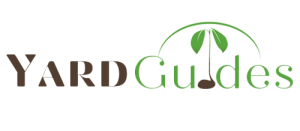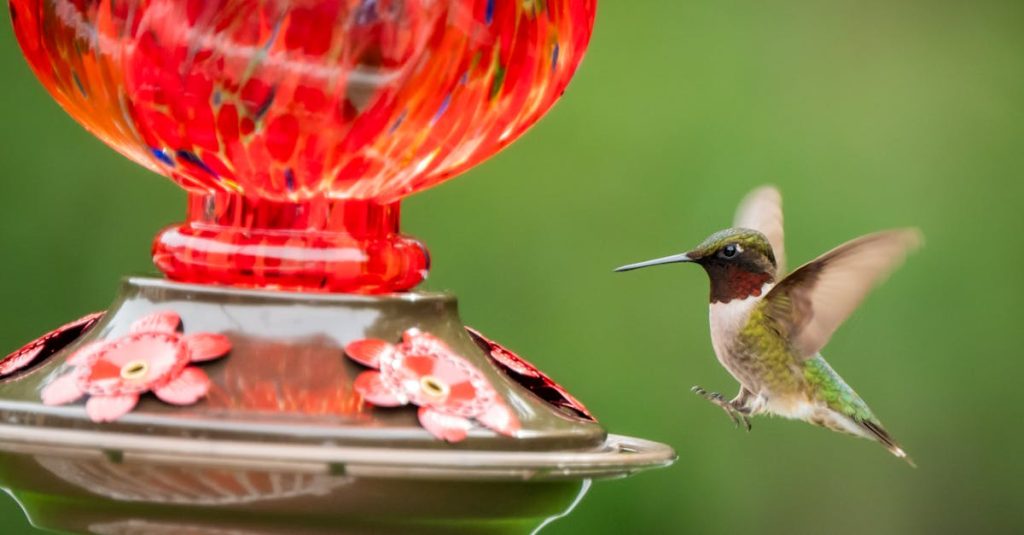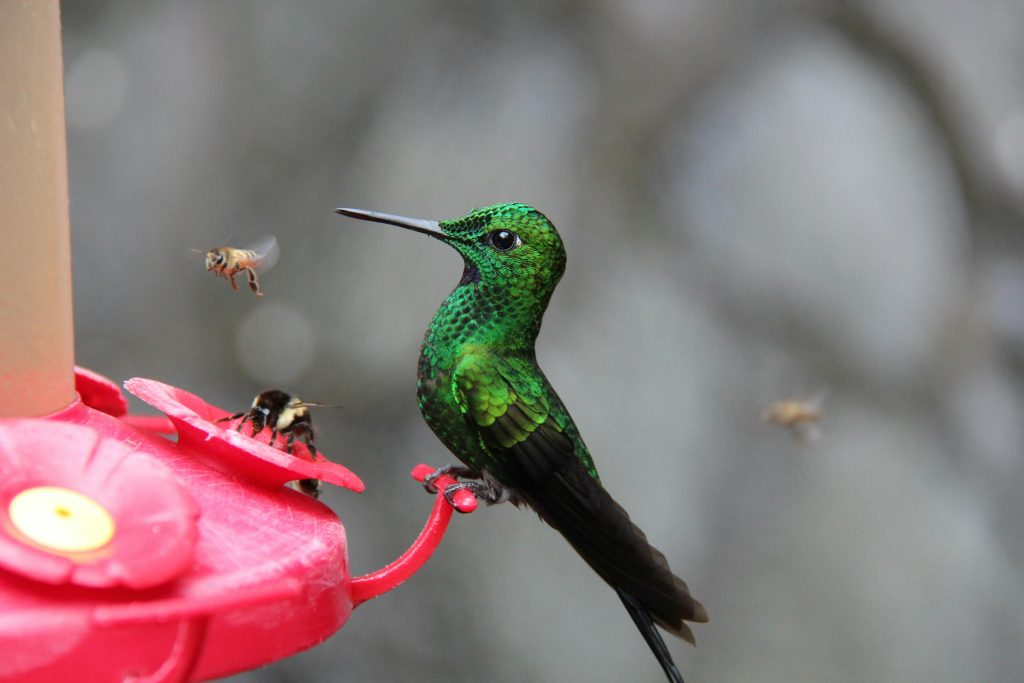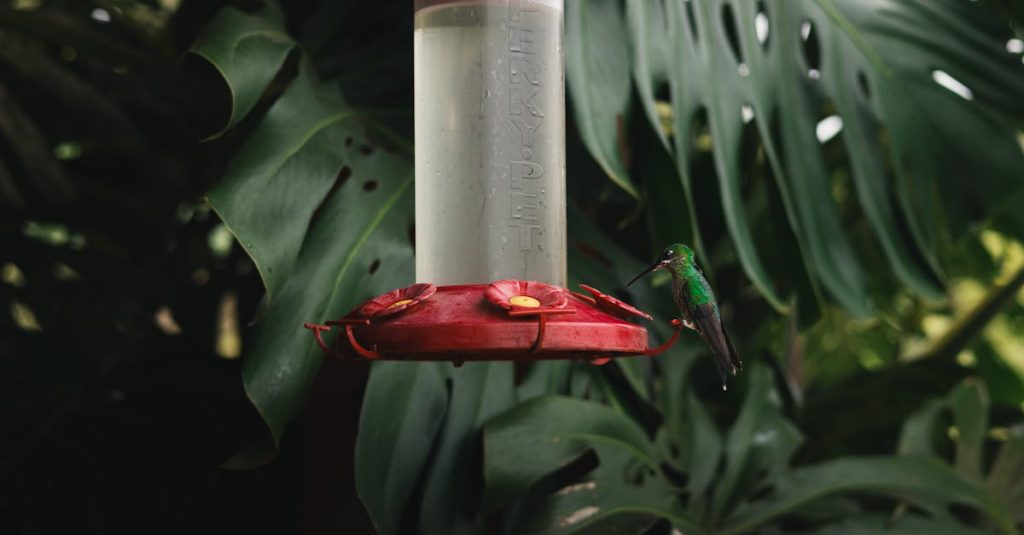Hummingbird feeders bring joy to many bird lovers. They attract these tiny, vibrant creatures to our gardens. However, they can also attract unwanted guests like wasps and bees. Wasps and bees are drawn to the sweet nectar. This can lead to a buzzing problem around your feeders. It can be frustrating for both you and the hummingbirds.
Understanding how to keep wasps away from hummingbird feeders is essential. It ensures a peaceful feeding environment. It also protects the hummingbirds from potential harm. In this guide, we’ll explore effective strategies. These methods will help you deter wasps and bees. You’ll learn how to maintain a wasp-free feeder.

By implementing these tips, you can enjoy watching hummingbirds without the nuisance of wasps. Let’s dive into the solutions that work best.
Why Are Wasps and Bees Attracted to Hummingbird Feeders?
Wasps and bees are natural nectar seekers. They instinctively search for sweet food sources. Hummingbird feeders with sugar water are perfect targets.
The color of the feeders also plays a role. Bright colors like yellow and orange can attract bees and wasps. They associate these colors with flowers.
Several factors make your feeder appealing to these insects:
- Sweet sugar nectar
- Bright, flower-like colors
- Accessible feeding ports
Wasps and bees can be problematic for feeders. They are not just after the nectar, but can also damage the feeder. This makes it easier for other pests to invade.
Additionally, these insects are more active during warmer months. This coincides with the peak time for hummingbirds. It’s important to understand their patterns.

Knowing why they are drawn to feeders helps in devising deterrent strategies. Reducing these attractants is key to a peaceful environment.
The Impact of Wasps and Bees on Hummingbirds
Wasps and bees can significantly affect hummingbirds at feeders. When feeders are overwhelmed with these insects, hummingbirds may hesitate to visit. The presence of these insects can deter even the bravest of birds.
Hummingbirds require consistent feeding to maintain energy, especially during migration. When wasps and bees dominate feeders, hummingbirds might miss essential meals. This can impact their health and migration success.
Furthermore, the risk of being stung, while low, is present. Small conflicts over feeder space can arise. Such disturbances can transform a peaceful feeding spot into a stressful environment for hummingbirds. Keeping the insects at bay can ensure tranquility for these vibrant birds.
Choosing the Right Hummingbird Feeder to Keep Wasps Away from Hummingbird Feeders
Selecting the right hummingbird feeder can make a significant difference in deterring wasps and bees. A well-designed feeder can minimize insect attraction and ensure that hummingbirds have safe access to nectar.
Consider feeders with bee guards. These guards are designed to prevent bees from reaching the nectar, while still allowing hummingbirds to feed comfortably. Such features can reduce bee presence dramatically.
Opt for feeders with red components. Unlike yellow, which is attractive to bees, red is a color that bees and wasps tend to ignore. This simple color choice can be an effective deterrent.
Additionally, feeders with narrow ports are less appealing to larger insects. Narrow openings restrict access, making it difficult for wasps to reach the nectar. It ensures only hummingbirds can dine without interference.
Here’s what to look for in a feeder:
- Bee guards
- Red design
- Narrow feeding ports
By choosing the right feeder, you create a more welcoming environment for hummingbirds.

Placement Strategies: Where and How to Hang Your Feeder
The placement of your hummingbird feeder plays a pivotal role in deterring unwanted pests like wasps and bees. Strategic hanging can significantly reduce insect attraction while enhancing the feeding experience for hummingbirds.
First, consider shaded areas. Wasps prefer sunny spots, so placing your feeder in a shaded location can minimize their presence. Trees or patios often provide ideal shade that discourages these insects.
Another tip is to hang the feeder away from flowering plants. These plants already attract bees, which can lead them to discover your feeder. By distancing the feeder, you help reduce this risk.
It’s also beneficial to change the feeder’s location periodically. Wasps and bees can learn feeding patterns. Moving the feeder disrupts these patterns, preventing insects from settling.
Key placement strategies include:
- Choosing shaded areas
- Avoiding proximity to flowers
- Periodic relocation
Implementing these strategies can enhance the effectiveness of your feeder.

Cleaning and Maintenance: Keeping Feeders Less Attractive to Insects
Regular cleaning of your hummingbird feeder is crucial. It helps prevent the build-up of sugary residues that attract wasps and bees. Clean feeders are less appealing to insects, making frequent cleaning essential.
Use warm water and vinegar for effective cleaning. This combination removes sticky nectar without leaving harmful residues. Aim to clean your feeder at least once a week, more often in warm weather.
Don’t overlook the importance of checking for leaks or damage. Even small cracks can invite bees and wasps. Replace damaged feeders promptly to maintain a pest-free environment.
Cleaning tips include:
- Use warm water and vinegar
- Clean feeders weekly
- Check for damage regularly
Keeping your feeder clean ensures a peaceful experience for hummingbirds.

Adjusting Nectar Recipe and Feeder Design
To make your feeder less enticing to bees and wasps, consider tweaking your nectar recipe. Reducing the sugar concentration can help. Instead of the usual 1:4 sugar to water ratio, try a 1:5 ratio to make the nectar less appealing.
The design of your feeder also plays a significant role. Opt for feeders with narrower ports to deter wasps. They find it difficult to reach the nectar, unlike hummingbirds, which can easily access it.
Here’s how to adjust your feeder setup:
- Use a 1:5 sugar to water ratio
- Choose feeders with narrow ports
- Avoid feeders with exposed nectar
These simple adjustments can significantly reduce unwanted insect visits.
Physical Barriers: Bee Guards, Moats, and Wasp-Proof Features
Physical barriers are effective in keeping bees and wasps away from your hummingbird feeders. Bee guards are a popular choice. They act as barriers that let hummingbirds feed but block larger insects.
Moats, or ant guards, filled with water can prevent crawling insects from reaching the feeders. These act like small ditches that stop ants and bees in their tracks. A simple addition can make a big difference.
There are also feeders designed with wasp-proof features. These feeders have small, flower-shaped feeding ports that cater specifically to hummingbirds. Wasps find it hard to access these narrow openings.
Consider these physical deterrents:
- Bee guards
- Moats or ant guards
- Wasp-proof feeder designs

These tools not only protect hummingbirds but also save you hassle. Simple changes mean fewer uninvited guests at your feeder.
Natural Deterrents: Scents and Plants That Repel Wasps and Bees
Using natural scents can effectively deter wasps and bees from your feeders. Certain smells, like peppermint or eucalyptus oil, are known to repel these insects. A few drops around the feeder area could greatly reduce insect activity.
Additionally, planting specific types of foliage can create a less inviting environment for bees and wasps. Herbs such as mint, citronella, and marigolds are great options. They emit scents that naturally keep these insects at bay while adding beauty to your yard.
Here are some deterrent options to explore:
- Peppermint oil
- Eucalyptus oil
- Mint and citronella plants

Incorporating these natural deterrents ensures your hummingbirds remain undisturbed by pesky insects. It also promotes an eco-friendly habitat and aims to keep wasps away from hummingbird feeders in your yard.
Alternative Food and Water Sources for Bees and Wasps
Providing alternative food and water sources can draw bees and wasps away from hummingbird feeders. By diverting their attention, you can maintain a peaceful feeding area for hummingbirds. This approach helps satisfy the needs of all creatures without conflict and keep wasps away from hummingbird feeders.
Place a shallow dish filled with sugar water far from the hummingbird feeder. This simple setup can satisfy bees’ and wasps’ cravings without disturbing the hummingbirds. It’s important to monitor and maintain this dish to ensure it remains effective.
Consider the following alternatives:
- Shallow dish with sugar water
- Small, dedicated bee and wasp feeders
- Wet sponges soaked in sweetened water
These alternatives can help balance the ecosystem while preserving the serenity of your hummingbird feeding station.
Decoy Feeders and Distraction Techniques
Decoy feeders serve as an effective distraction for bees and wasps. By offering an enticing alternative, you can focus their attention elsewhere. Place these decoy feeders away from the primary hummingbird feeders to avoid clashes.
When setting up decoy feeders, consider using:
- Sugar water feeders designed specifically for bees
- Bright, colorful flowers to attract insects
- Areas with ample sunlight, which draw wasps naturally
These distraction techniques can reduce insect traffic at hummingbird feeders, allowing for a more peaceful environment for the birds. Regularly check and adjust these setups to ensure they remain appealing and effective, and keep wasps away from hummingbird feeders.
What Not to Do: Harmful Methods to Avoid
In your quest to keep wasps and bees away, be cautious of harmful techniques. Some methods can inadvertently harm hummingbirds or damage the environment.
Avoid these harmful practices:
- Applying chemical pesticides near feeders
- Using sticky substances that can trap small birds
- Placing poisons or toxic substances around the area
These methods do more harm than good. They can threaten the health of birds and beneficial insects. Always prioritize safe and gentle deterrent strategies to maintain a healthy ecosystem around your feeder and keep wasps away from hummingbird feeders.
Frequently Asked Questions
Do hummingbirds eat wasps?
Hummingbirds generally do not eat wasps. They focus on nectar, though they may consume small insects occasionally.
How can I keep bees away from my hummingbird feeder?
To keep bees away, reduce nectar concentration and use feeders with bee guards. Alternative food sources nearby can also help.
Are some feeders better for preventing wasps?
Yes, some feeders are designed with wasp-proof features. Look for narrow feeding ports and built-in ant moats.
What should I do if bees take over my feeder?
If bees dominate your feeder, move it temporarily. This can confuse them and disrupt their routine. Consider trying decoy feeders or adding natural deterrents like peppermint oil as well.
Summary: Creating a Safe and Enjoyable Feeding Experience
Creating a bee and wasp-free environment for hummingbird feeders requires thoughtful strategies. By choosing the right feeder and using natural deterrents, you can reduce insect attraction and ensure hummingbirds enjoy their food undisturbed.
Remember to prioritize non-lethal solutions that protect both your garden’s visitors and the ecosystem. With a little effort, you can maintain a harmonious balance in your outdoor space and keep wasps away from your hummingbird feeders!



